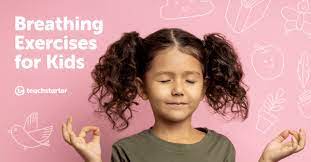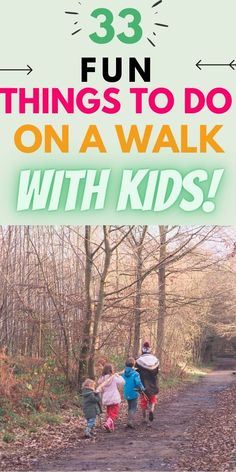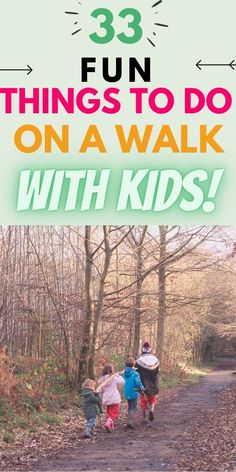Breathing exercises are not just beneficial for adults; they also offer a wide range of benefits for children. Incorporating breathing exercises into a kid’s daily routine can help promote relaxation, reduce stress, and improve concentration. Many resources offer free videos to teach children simple breathing techniques that they can practice anywhere and at any time.
One popular breathing exercise for kids is “Belly Breathing.” It encourages children to focus on filling their belly like a balloon with air and then slowly exhaling. This type of deep breathing can be particularly soothing and is often used as a tool to calm down from strong emotions.
Another exercise, “Bubble Breathing,” involves pretending to blow bubbles while maintaining deep and slow breaths. This not only helps in regulating breathing patterns but also makes the activity fun and engaging, increasing the likelihood that kids will stick with it.
“The Bumblebee Breath” is also favored among young ones. Kids buzz like a bee as they breathe out, which naturally extends the length of the exhale and has a calming effect. It’s particularly useful for kids who are feeling anxious or need help falling asleep.
For parents and educators seeking free videos to teach these exercises, YouTube is an excellent starting point. Channels such as “GoNoodle” and “Cosmic Kids Yoga” have a collection of child-friendly videos featuring breathing exercises amid storytelling and interactive activities.
Furthermore, mindfulness apps such as “Smiling Mind” and “Headspace” offer specific sections with free content tailored for children, including animations that guide them through various breathing exercises.
The integration of technology in teaching breathing exercises allows children to learn these valuable skills in an entertaining and accessible way. These free resources not only provide instruction but also create an enjoyable experience that can foster lifelong habits for managing stress and promoting mental well-being.
5 Minutes of Mindfulness: Activity Task Cards
In today’s fast-paced world, finding time to center oneself and practice mindfulness can be a challenge. However, the benefits of incorporating even brief periods of mindfulness into your day are profound. Recognizing this, a novel way to introduce mindfulness into daily life has gained popularity:
The concept is simple. These task cards are designed to be quick and accessible tools that offer structured mindfulness activities that can be completed in just five minutes. They serve as reminders and guides for individuals to pause and engage in a practice that can reduce stress, enhance concentration, and promote a sense of peace.
Each card contains a short mindfulness exercise meant to redirect attention away from external distractions and toward internal experiences. The activities range from breathing techniques and body scans to gratitude exercises and sensory observations. Here’s an example of what one might find on an activity task card:
Title: Five Senses Countdown
Instructions:
1. Pause whatever you’re doing and take a comfortable seat.
2. Take three deep breaths to center your attention.
3. Acknowledge FIVE things you see around you. It could be anything in your environment.
4. Note FOUR things you can touch. Feel the texture and temperature.
5. Listen for THREE sounds you can hear in the immediate surroundings.
6. Identify TWO things you can smell or, if that’s not applicable, two smells you like.
7. Recognize ONE thing you can taste or remember a taste you enjoy.
Complete this cycle at least once, allowing about one minute per step.
The design of these cards often includes tranquil imagery or calming colors to help set the tone for the mindfulness session. They are particularly useful for those new to mindfulness practices because they offer clear guidance without overwhelming the user with too many options.
These 5-minute task cards can be used by individuals looking to add moments of mindfulness throughout their day or by educators and employers who aim to provide wellness resources for their students or staff members.
The versatility of the activity task cards means they can be adapted for use in various settings – at home, in schools, workplaces, or even during travel. They act as gentle nudges towards taking mental breaks, which contribute to overall well-being.
Having a set of these cards on hand encourages regular engagement with mindfulness exercises and makes it more likely that people will make them part of their daily routine. With consistent use, these miniature moments of meditation can lead to lasting positive effects on mental health and an improved ability to navigate life’s inevitable stresses.
5 Minutes of Mindfulness Activity Task Cards provide an easily adoptable solution for those seeking serenity amidst the commotion of everyday life – proving that sometimes, all it takes is five minutes to reset and refresh one’s state of mind.
Breathing Exercises for Kids (Free Videos)
In a world where children are often swept up in the rush of life, from school assignments to social media, teaching them to take a moment to breathe and relax is invaluable. Not only do breathing exercises help in reducing stress, but they also improve concentration, and provide a host of other benefits for growing bodies and minds. With this in mind, let’s explore some simple breathing exercises designed for kids that come with free videos to guide them through the process.
1. Balloon Breaths
This imaginative exercise turns breathing into a game. Children are asked to imagine they’re blowing up a balloon inside their bellies as they inhale, watching it expand, then slowly letting the air out as if they’re deflating the balloon. This can be particularly engaging as kids can choose the color of their imaginary balloon. A free video by [Online Kid’s Yoga resource] walks you through this fun activity.
2. Bumblebee Breaths
An exercise that doubles as a sound game: kids will breathe in deeply and then make a long buzzing ‘zzzz’ sound like a bumblebee when exhaling. This helps kids to focus on the exhalation and make it longer than the inhalation—key for relaxation. The [Children’s Mindfulness YouTube Channel] has an endearing video that teaches kids this technique along with animated bees for company.
3. The Five-Finger Starfish Meditation
Here children use their fingers to trace the outline of their hand while breathing in and out—a breath for each finger traced. This gives kids a tactile focus point which helps maintain their concentration on their breaths. A free instructional video is provided by [Mindful Schools], showing step-by-step guidance.
4. Bubble Breaths
Similar to Balloon Breaths, this exercise involves deep inhales and controlled exhales, only this time kids imagine blowing real bubbles. It’s an engaging way to encourage gentle breathing techniques and is demonstrated clearly in the online video available on [Relaxation For Kids].
The beauty of these exercises is that they do not require any special equipment, making them accessible to anyone with internet access. By introducing these simple yet effective practices into their daily routines, children can establish healthy habits that promote calmness and resilience from an early age.
Free videos accompanying these exercises can be found with ease on various platforms including YouTube and mindfulness-focused websites for children. Parents and educators are encouraged to participate alongside their children, turning breathwork into an enjoyable group activity that also strengthens bonds while promoting well-being.
These fun-filled exercises are perfect steps toward helping children develop mindfulness and emotional regulation through playful yet purposeful activities. The free guides ensure these techniques are easily adopted and integrated into busy young lives for lasting positive impact.
16 Nature Walk Activities for Kids
Engaging children in nature walks can ignite their curiosity and appreciation for the natural world. Here are 16 activities to make nature walks exciting and educational for kids:
1.Scavenger Hunt: Prepare a list of natural items for kids to find, such as acorns, feathers, or variously shaped leaves.
2.I Spy: Play a game of I Spy where children have to spot things in nature, such as something green or something that flies.
3.Nature Art: Collect natural materials to create artwork on the trail or at home.
4.Wildlife Observation: Encourage quiet observation to spot birds, squirrels, and other wildlife.
5.Texture Bag: Place objects with different textures into a bag and have kids reach in to describe what they feel.
6.Sensory Walk: Ask children to focus on one sense at a time, like listening for sounds or smelling flowers.
7.Leaf Rubbings: Place a leaf under paper and use crayons to make rubbings that reveal intricate patterns.
8.Nature Photographer: Equip kids with a camera or smartphone to capture the beauty around them.
9.Poetry in Nature: Have children reflect on their surroundings and write short poems or haikus about what they see.
10.Trail Blazers: Let the kids lead the way, making decisions about which paths to take.
11.Insect Inspection: Search for insects under rocks and logs, inspecting their habitat and behaviors.
12.Identify Plants: Use a guidebook or app to learn about the various plants along your path.
13.Cloud Watching: Lay on your back and watch the clouds go by, discussing the different shapes and forms you see.
14.Nature Charades: Act out different animals or elements found in nature while others guess what it is.
15.Rock Buddies: Collect rocks along the path and paint them later to create rock “buddies” or ornaments.
16.Eco-Warriors: Bring along garbage bags and gloves so kids can pick up litter, teaching them about preserving natural spaces.
Each of these activities is aimed at enhancing observational skills, fostering creativity, and instilling a love of nature in children while making family time engaging and fun on nature walks.
16 Activities to Do During a Nature Walk Us
Enjoying the great outdoors is a wonderful way to spend time, either alone or with friends and family. Going on a nature walk is more than just a stroll through the wilderness; it’s an opportunity to engage with the environment around you and even enhance your physical and mental well-being. There are numerous activities you can partake in while on your nature walk to make it an enriching experience.
1.Bird Watching: Bring along some binoculars and a field guide to spot and identify various bird species.
2.Photography: Capture the beauty of nature through your lens. Focus on landscapes, flora, fauna, or interesting textures.
3.Scavenger Hunt: Make a list of natural objects to find during your walk, like certain leaves or rocks.
4.Sketching: Pack some pencils and a sketchbook to draw the scenery or details that catch your eye.
5.Nature Journaling: Write about what you see, hear, and feel. Describing your surroundings can be meditative and insightful.
6.Leaf Rubbing: Collect different leaves, place them under paper, and rub over them with crayon or pencil to reveal their textures.
7.Meditation: Find a peaceful spot to sit quietly and meditate, focusing on your breath or the sounds around you.
8.Wildlife Tracking: Look for signs of wildlife such as footprints, nests, or chewed foliage.
9.Plant Identification: Use a guidebook or app to identify trees, plants, and flowers you come across.
10.Picnicking: Pack a meal with lots of goodies, find a nice spot to relax, eat, and enjoy the view.
11.Geocaching: Join this outdoor recreational activity where participants use GPS coordinates to hide and seek containers called “geocaches” at specific locations marked by coordinates all over the world.
12.Insect Observation: Study the world of insects; watch ants march or observe the buzzy activity of bees pollinating flowers.
13.Nature Sounds Recording: Use your phone or a recorder to capture the natural sounds of the wilderness; they make for great relaxation tracks later on!
14.Foraging: If knowledgeable about local flora, look for edible plants but be sure it’s legal and safe in the area you’re walking.
15.Water Activities: If near a body of water, skip stones, wade in shallows looking for aquatic life or simply enjoy the serene water view.
16.Physical Exercise: Integrate some exercise into your walk like yoga stretches at scenic spots or jogging intervals along the path for added health benefits.
Remember that when engaging in these activities it’s crucial to respect wildlife and natural habitats by observing from a distance and not leaving any trace behind. Have fun connecting with nature!
Managing School Related Anxiety for Teachers Returning to School During Covid 19
Returning to school during the COVID-19 pandemic presents unique challenges, particularly with managing the heightened levels of stress and anxiety associated with this unprecedented time. Teachers, who are at the forefront of education, are navigating these waters not only for themselves but also for their students. Here are some strategies to manage school-related anxiety in the complicated context of COVID-19:
Establish a Routine: Having a predictable routine can be extraordinarily comforting. Structure your day so you have a clear sense of what to expect. This includes regular sleep times, meal times, and breaks throughout your workday.
Stay Informed, but Not Overwhelmed: It’s crucial to stay updated with the latest safety guidelines from credible sources like the CDC or WHO without overindulging in media consumption that may increase anxiety. Set specific times for news update.
Build Connections: Use technology to stay connected with your colleagues. Sharing experiences and coping strategies can offer support and diminish feelings of isolation or disconnect.
Set Boundaries: Establish clear boundaries between work and personal life. Designate a workspace if possible and set limits on work hours to ensure you have time to relax and recharge.
Focus on What You Can Control: You can’t control the pandemic, but you can control how you respond to it. Focus on implementing safety measures in your classroom and encourage practices that reduce risk of transmission among staff and students.
Practice Self-Care: Prioritize your physical and mental health by engaging in regular exercise, meditating, pursuing hobbies, or other activities that bring joy and relaxation.
Seek Professional Support: Don’t hesitate to reach out to a mental health professional if anxiety becomes overwhelming. Many professionals are offering telehealth services during this time.
Implementing these strategies can help teachers create a more controlled and less stressful environment for themselves as they return to schools during these challenging times. Acknowledging anxiety is a natural response but addressing it with deliberate actions can make all the difference in navigating this new normal.
World Mental Health Day 5 Tips for Teacher Well Being
World Mental Health Day is observed on October 10th every year, aiming to raise awareness about mental health issues around the world and to mobilize efforts in support of mental health. As educators are pivotal in shaping minds and nurturing the well-being of students, it is crucial that teachers also prioritize their mental health. Here are five tips to help teachers maintain their well-being:
1.Practice Mindfulness: Take a few minutes each day to practice mindfulness or meditation. This can help reduce stress, improve focus, and bring about a sense of calm. There are many resources available, including apps and online tutorials, which can guide you through mindfulness exercises.
2.Set Boundaries: As a teacher, it’s natural to want to be available for your students at all times. However, it’s important to set boundaries between work and personal life. Stick to your working hours when possible, and reserve evenings and weekends for rest, hobbies, and time with loved ones.
3.Seek Support: Teaching can be an isolating profession at times. Don’t hesitate to reach out for support from colleagues, friends, or professional networks. Sharing experiences with others who understand the unique challenges of teaching can provide comfort and solutions.
4.Engage in Professional Development: Keep your teaching practice fresh and invigorating by engaging in professional development opportunities. Learning new strategies not only benefits your students but can also re-energize your passion for teaching.
5.Prioritize Physical Health: Your mental health is closely linked to your physical health. Ensure you get regular exercise, eat a balanced diet, and get enough sleep each night to keep both your body and mind in good shape.
Teachers play a critical role in promoting a positive environment for learning, and by taking care of their own mental health, they set a positive example for their students. On World Mental Health Day—and every day—it’s important that we acknowledge the value of our educators’ well-being as much as we do our own.
The Ultimate Guide to Wet Weather Lunches (for Teachers)
When the skies turn grey and a downpour is imminent, teachers across the globe face a unique challenge: ensuring their students are well-fed and happy during wet weather lunchtimes. The “Ultimate Guide to Wet Weather Lunches for Teachers” provides a comprehensive approach to tackling this issue, ensuring that dreary days do not lead to dreary moods.
Firstly, it’s important for teachers to have a plan B for lunch spaces. Outdoor play areas may no longer be an option, so having a designated indoor area where children can eat and play is essential. Multipurpose rooms or empty classrooms can serve as temporary lunch spots.
In terms of food, it’s essential to think about items that are not messy and easy to manage within a classroom setting. Sandwiches, wraps, fruit pieces, vegetable sticks with dips, and individual yogurt pots are excellent choices. Not only do they require minimal cleanup, but they also provide the necessary nutrition to keep students energized throughout the day.
Engagement is key during wet weather lunches as students may feel disappointed about missing their normal playtime. Planning short activities such as storytelling sessions, quiet games or art projects can keep students entertained while they eat.
Finally, it’s crucial for teachers to communicate with parents in advance about wet weather contingency plans. This way, parents can prepare suitable lunches and understand that there may be changes in their child’s lunchtime routine during these days.
By preparing spaces, choosing the right foods, providing engaging activities, and effectively communicating with parents, teachers can turn potentially chaotic wet weather lunches into enjoyable indoor picnics. This guide should suffice as an invaluable resource for any teacher looking to facilitate a smooth transition during the unanticipated rainy days.
Tips To Reduce Germs In The Classroom
Keeping the classroom clean and free from germs is essential to maintain a healthy learning environment for students. Here are some tips to help reduce the spread of germs in the classroom:
1.Encourage proper hand hygiene: Teach students the importance of washing their hands with soap and water for at least 20 seconds. Provide hand sanitizers in common areas and remind students to use them regularly.
2.Disinfect commonly touched surfaces: Regularly clean and disinfect frequently touched surfaces such as desks, chairs, door handles, and light switches. Use disinfectant wipes or sprays to kill germs effectively.
3.Encourage covering coughs and sneezes: Teach students to cover their mouth and nose with a tissue or their elbow when coughing or sneezing. Discourage them from using their hands to prevent the spread of germs.
4.Promote respiratory etiquette: Remind students to avoid touching their face, especially their eyes, nose, and mouth, as it can transfer germs from surfaces to the body.
5.Ensure proper ventilation: Improve classroom air quality by opening windows or using air purifiers if available. Good ventilation helps reduce the concentration of airborne germs.
6.Limit sharing of personal items: Encourage students to avoid sharing items like stationery, water bottles, and food to minimize the spread of germs. Teach them the importance of personal hygiene and keeping their belongings clean.
7.Teach good academic hygiene: Encourage students to organize their belongings to minimize the chance of germ transmission. Advise them to keep their backpacks, books, and other items clean and free from clutter.
8.Educate about illness prevention: Teach students about common illnesses and how to prevent them. Explain the importance of getting enough sleep, eating a healthy diet, and maintaining overall good health to reduce susceptibility to illnesses.
9.Establish a daily cleaning routine: Set aside time each day for students and teachers alike to clean and sanitize their personal spaces. Emphasize the importance of cleanliness as a shared responsibility.
By implementing these tips, you can create a healthier classroom environment and reduce the spread of germs among students. Regularly reinforcing good hygiene practices will benefit both their individual health and overall well-being.
Food Sustain ability and Nutrition Resources Feast
Food sustainability and nutrition are critical components of public health and environmental stewardship. With a growing global population and the increasing impact of climate change, it’s more important than ever to ensure that our food systems can provide adequate nutrition without depleting natural resources or harming the planet.
The term “FEAST” — Food, Environment, Agriculture, Sustainability, and Teaching — captures the key elements of this movement toward a more sustainable food future. It encompasses a holistic approach to nourishing populations while preserving the environment.
Understanding Food Sustainability
Food sustainability involves creating food systems that are environmentally friendly, economically viable, and socially equitable. Sustainable practices include supporting local agriculture, reducing food waste, conserving natural resources like water and soil, and minimizing greenhouse gas emissions associated with food production.
Nutrition Resources in Sustainable Food Systems
Nutritional resources focus on ensuring that all people have access to a variety of safe and nutrient-dense foods necessary for maintaining good health. Sustainable nutrition emphasizes the importance of plant-based diets, which have lower environmental impacts compared to diets high in animal-based foods. It also involves improving the nutrient content of foods through biofortification and promoting nutrition-sensitive agriculture.
The Feast Framework
The FEAST framework looks at combining education with practical solutions to promote sustainable eating habits. This includes:
– Integrating sustainability principles into school curriculums.
– Encouraging community gardens and local farming initiatives.
– Providing resources for consumers to make informed choices about the environmental impact of their food purchases.
– Offering nutritional guidelines that favor sustainable options without sacrificing health benefits.
Case Studies & Initiatives
Around the world, various programs and organizations embody the FEAST principles. Urban farming projects in cities such as New York and Tokyo demonstrate how local production can contribute to food security. Initiatives like farm-to-school programs help children understand where their food comes from while supporting local agriculture. Additionally, international groups like the Global Alliance for Improved Nutrition (GAIN) work towards improving nutrition outcomes within sustainable frameworks.
Tools for Implementation
Tools for implementing FEAST-related strategies include:
– Mobile apps that track the sustainability of different food products.
– Educational toolkits for teachers wanting to incorporate sustainability into their classrooms.
– Online platforms connecting consumers to sustainably-produced local foods.
– Guidelines for policymakers looking to foster regional sustainable food systems.
Conclusion
The convergence of food sustainability and nutrition resources under the umbrella term “FEAST” offers a comprehensive approach to confronting some of today’s most pressing challenges: feeding a booming population while protecting our planet for future generations. By adopting FEAST principles, individuals and communities can contribute meaningfully to a healthier world where both people and nature thrive together.











